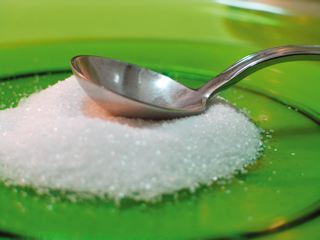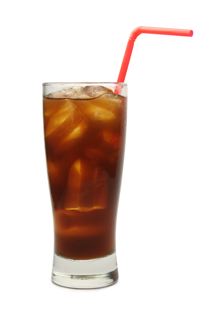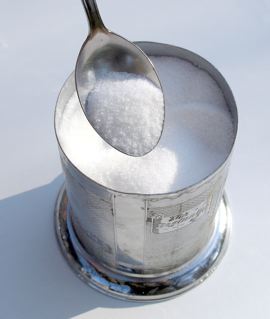 Sweeteners fall into one of two major categories: Nutritive (which provide calories since they are either sugar alcohols or various carbohydrates), or Nonnutritive (which in their pure state do not provide any calories).
Sweeteners fall into one of two major categories: Nutritive (which provide calories since they are either sugar alcohols or various carbohydrates), or Nonnutritive (which in their pure state do not provide any calories).
There are products within each of the sweetener categories available for direct consumer purchase (possibly as liquids in bottles, as tablets, in packets, or in various “bulk bags”), or which are added by manufacturers during food manufacturing and processing (which should be noted on a product ingredient label). (Sweetener image courtesy of wax114 at rgbstock.com)
A lot of controversy exists concerning all the various types of sweeteners.
Health agencies and organizations try to zero in on the implications for use of various sweeteners as it affects the health of the general public.
You may have heard or read in the media that the American Diabetes Association (ADA) and the American Heart Association (AHA) jointly released a scientific statement just this week on July 9, 2012, addressing 6 nonnutritive sweeteners currently in use in the USA (Acesulfame-K, Aspartame, Neotame, Saccharin, Stevia Glucosides, and Sucralose). A 7th nonnutritive sweetener also approved for use in the US by the FDA, luo han guo fruit extract, was not addressed in the scientific statement.
There are additional details about nonnutritive sweeteners in general and those that were specifically mentioned in the ADA/AHA scientific statement which might be of interest to you, your family and your friends.
Let’s share some additional, practical infotainment perspectives on the role of various types of sweeteners in your food supply.
 The ADA/AHA scientific statement addressed reasons why it is more desirable to consider nonnutritive sweeteners for use in liquids (think soft drinks or hot beverages) rather than in solids.
The ADA/AHA scientific statement addressed reasons why it is more desirable to consider nonnutritive sweeteners for use in liquids (think soft drinks or hot beverages) rather than in solids.
We see good support for that stance from a food technology and food science perspective as well and would like to elaborate on that a bit.
Nutritive sweeteners (primarily those that are NOT sugar alcohols), serve important functions in baking, candy making and cooking that pure nonnutritive sweeteners per se simply do not. That is part of the reasoning as to why nonnutritive and nutritive sweeteners are actually blended together in certain products sold to the public in what are termed “bulk baking bags” for consumers like you to consider using for baking purposes, particularly when making bar cookies, quick breads, etc. (Iced tea image courtesy of nazreth at rgbstock.com).
Typically, various nutritive sweeteners function in food products by:
- acting as a humectant in some instances to keep food items moister (thus preserving them better) than they would be without the sweetener present;
- aiding in desirable levels of browning (contribute to/help maintain desirable color) when baked goods are baked;
- balancing acidity levels;
- binding water in some instances to inhibit undesirable microbial growth in, for example, dried fruits and fruit leathers, jams, jellies, etc;
- contributing to & help to maintain structural integrity (including product shape) and perceived texture in baked goods;
- contributing to caramelization;
- contributing to the volume of a product;
- enhancing a creamy consistency;
- enhancing crystallization;
- providing flavor beyond merely a sweet taste–for example, in certain instances when other compounds are involved (such as in the case of molasses or brown sugar made with molasses content; various types of honey with other flavor notes; syrup (which can be flavored from nutmeg, maple sap, etc.); and fruit juices which have other flavor components; or super concentrated commercial syrups such as the base mixture from which colas are made, gingerale is made, etc.;
- supporting the growth of yeast cells when liquid is present to activate yeast.
Of course, beyond contributing a perception of sweetness, nutritive sweeteners are also often readily available at a reasonable cost.
Because nonnutritive sweeteners are typically perceived by people as being at least HUNDRED(S) up to THOUSANDS of times sweeter than table sugar is, only very tiny amounts of the nonnutritive sweeteners are needed for use in either cold or hot food products as applicable, depending upon the nonnutritive sweetener’s heat stability. It often simply isn’t feasible to package only PURE miniscule amounts of nonnutritive sweeteners for retail consumption purposes–frequently some type of filler or bulking agent is needed, which may contribute its own properties to the mixture.
As a result, these nonnutritive sweeteners are usually BLENDED with nutritive sweeteners based on the type of application (cold or hot) they are intended to be used in. Among the most commonly used nutritive sweeteners for this purpose are glucose, maltodextrin, and erythritol. (Erythritol is a naturally fermented and crystallized nutritive sugar alcohol substance produced from sugar cane juice).
Understand that means any “packet” or “bulk baking bag” will typically contain less than 5% of actual nonnutritive sweetener content, therefore, the rest of the packet or bag is typically primarily filled with a nutritive carbohydrate source.
Colored packets sold at retail which contain nonnutritive sweeteners are designed primarily for cold food application use and typically contain the nonnutritive sweetener as a powder blended with a bulking agent of glucose, which also contributes a sweet taste immediately perceived by your tongue.
“Bulk baking bag” products sold for hot applications typically contain some nonnutritive sweetener blended with a different bulking agent such as maltodextrin in a granular form, which can contribute desirable baking qualities when used to prepare baked goods products at home. (Often when nutritive sugars are used in baking applications, part of the success of their use is tied to their actual granular structure as it interacts with fats or egg whites, etc.).
 It frequently is not possible in home baking to remove 1 cup of a granular sugar and replace it with the pure form of a nonnutritive sweetener per se and still get satisfactory results. Why you ask? Because removing an entire cup of sugar from a recipe means that the volume of the product will now no longer be the same. It also means that one or more of the qualities contributed by the nutritive sweetener to the baked good as noted in the listing above has also potentially been lost.
It frequently is not possible in home baking to remove 1 cup of a granular sugar and replace it with the pure form of a nonnutritive sweetener per se and still get satisfactory results. Why you ask? Because removing an entire cup of sugar from a recipe means that the volume of the product will now no longer be the same. It also means that one or more of the qualities contributed by the nutritive sweetener to the baked good as noted in the listing above has also potentially been lost.
That is why the blended nonnutritive and nutritive sweeteners sold in “bulk baking bags” attempt to have about an equal substitution ratio for granular sugar that may work satisfactorily in some types of bar cookie, quick bread, etc. recipes, but not in others. Also realize that the carbohydrate content from the nutritive sweetener used in the bulk baking bag product means each cup of that product contains about 95 calories. Based on conversations we have had with some fellow dietitians, both they and their clients have had some good success with recipes put out by Marlene Koch, in particular a Cranberry Orange Tea Bread recipe, using one of the granular “baking bag” type products that is a sucralose and maltodextrin formulation.
In commercial applications, more food technology principles are put to work to try to come up with satisfactory baked goods products from a consumer’s sensory perspective.
Some potential benefits of using nonnutritive sweeteners include:
- Aiding in weight control when used to replace sugars in beverage intake (soft drinks, iced teas, lemonades, etc.);
- Contributing what some consider pleasurable sweet sensations without noticeably increasing energy intake;
- Decreasing caloric content of certain food and non-food items;
- Increasing taste appeal in non-food items such as gums;
- Not affecting blood glucose levels (although any nutritive sweetener fillers they are blended with CAN potentially affect blood glucose levels);
- Not increasing the incidence of dental caries and may even help prevent the formation of new cavities;
- Replacing sugar(s) to varying extents in cooking +/or baking (trickier for home use than commercial use);
- Requiring only a very small amount to be used to sweeten foods and beverages (because of their relative sweetness perception compared to table sugar).
Some of the potential downsides to the use of nonnutritive sweeteners include:
- Aspartame requires a content warning labeling on any food +/or pharmaceutical and related items;
- Beyond the Accepted Daily Intake (ADI), limited data affects projections for Estimated Daily Intake (EDI)*;
- Increased use of any sweeteners or increasing the sweet taste of beverages may increase an appetite for solids;
- Longitudinal research to date is more limited on the safety of specific levels of use during breast feeding and pregnancy;
- Metabolism in the body may be altered by certain formulations, which it has been postulated could lead to overeating;
- Potential associations with an undesirable taste or aftertaste;
- Varying effectiveness as substitutes for any sugar in baking, candy making and cooking.
The Academy of Nutrition and Dietetics has a formal stance voiced in a Position Paper issued this past May of 2012 on the use of Non-Nutritive Sweeteners. That Position Statement notes that “It is the position of the Academy of Nutrition and Dietetics that consumers can safely enjoy a range of nutritive and nonnutritive sweeteners when consumed within an eating plan that is guided by current federal nutrition recommendations, such as the Dietary Guidelines for Americans and the Dietary Reference Intakes, as well as individual health goals and personal preference.”
In the end, as a consumer, the choice is always yours. It’s important to consider your options when making sweetener choices. Consumption levels of various sweeteners will not only affect the eating enjoyment experienced by you and your family members now, but will also influence each family member’s long term health status for years to come.
*Look for the upcoming Part 2 of 2 blog post in this series to address more details about nutritive sweeteners. At that time, we’ll also post details about a free gift download that will include more specifics about nonnutritive sweeteners as well.

